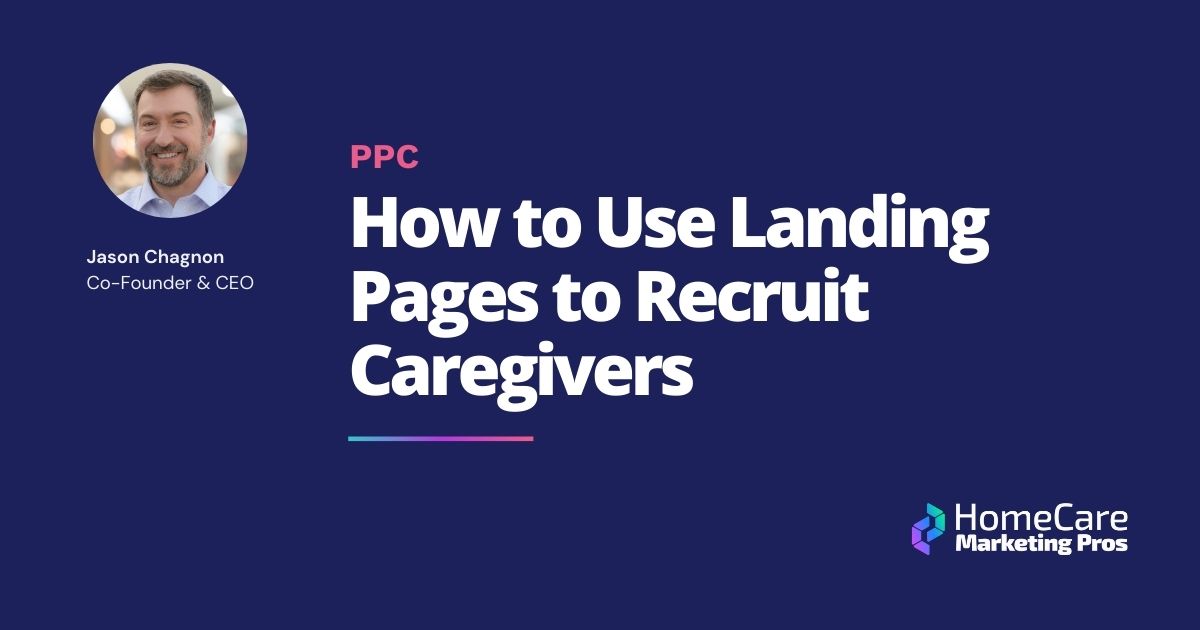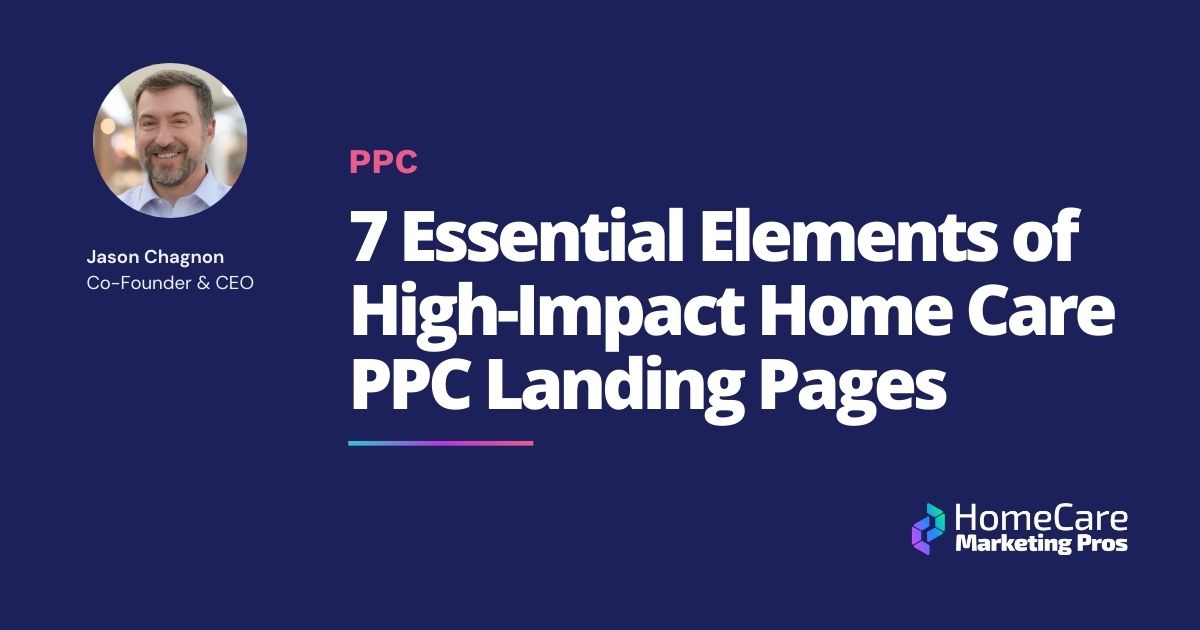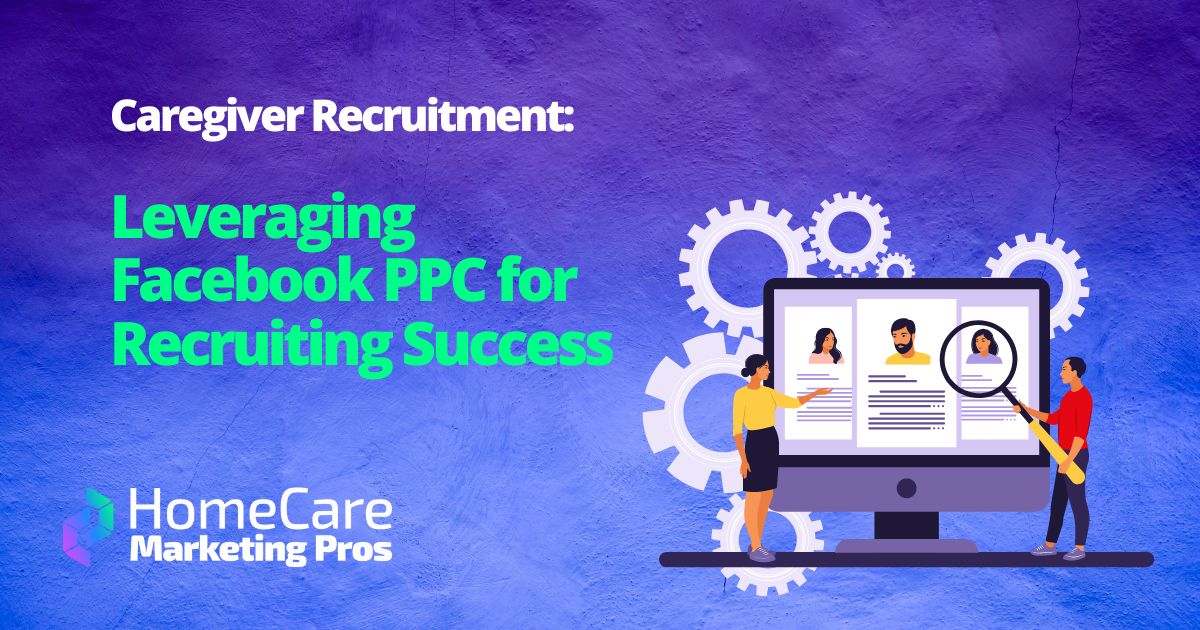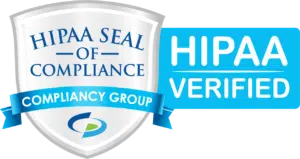Measuring Success: Key Metrics for Evaluating Home Care PPC Campaigns
A guide to the metrics and calculations needed to measure the success of your senior care agency's PPC campaigns
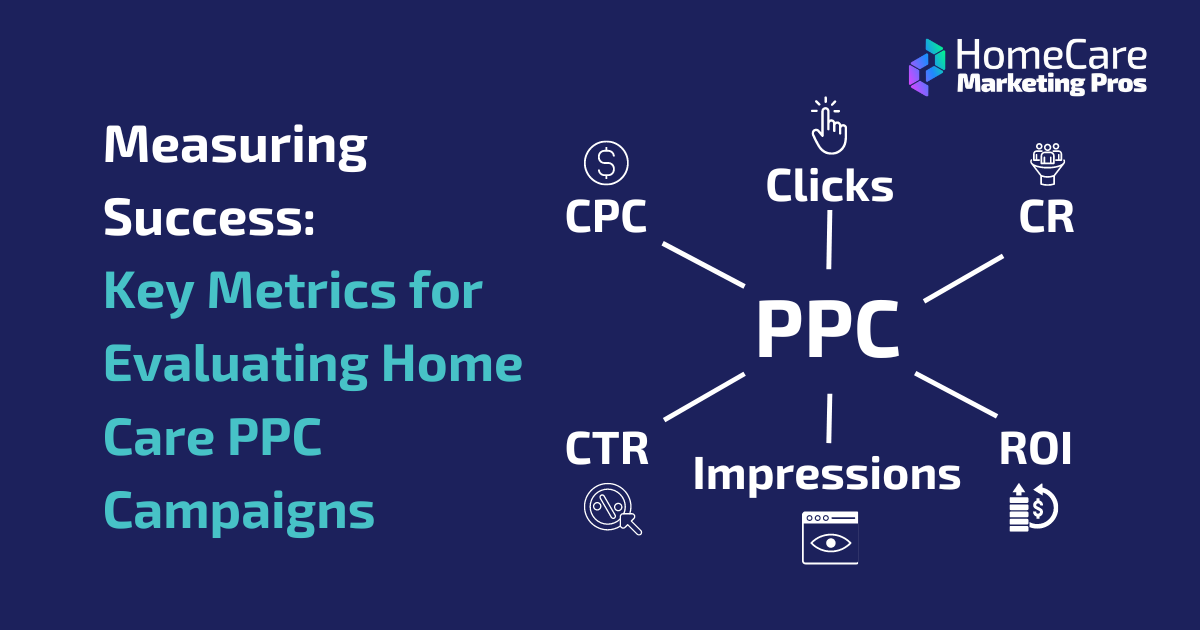
Marketers know the importance of tracking key performance indicators, or KPIs, for any campaign they run. Without these numbers, you can’t know how successful and efficient your marketing efforts are.
Some campaign types are harder to track than others. Print and TV campaigns, for example, are much harder to measure. But pay-per-click (often called PPC) campaigns can be tracked and measured from start to finish. Here’s what you need to know about evaluating the success of your home care agency’s PPC campaigns.
Why track PPC metrics?
You know the basics: By tracking campaign metrics, you can know how successful your marketing campaigns are.
However, tracking metrics for PPC campaigns, in particular, lets you optimize your PPC plans while your campaign is running. Carefully measuring KPIs and other relevant numbers can help you improve campaigns before, during, and after they run.
PPC metrics can help you:
- Make better PPC planning decisions. Metrics like average monthly searches and top-of-page bid help you plan to use your monthly ad spend more efficiently.
- Measure the success of your PPC campaigns in flight. As your campaign runs, you can monitor metrics like click-through-rate and conversion rate to see how engaging your ads are—and make adjustments to improve those figures.
- Gather insights to plan future campaigns. After a campaign wraps, calculating your ROI and cost per acquisition can tell you which platforms, ads, keywords, and ad types are best suited to your home care marketing campaigns.
Here are the most important KPIs for your PPC campaigns.
9 key metrics to track for PPC campaigns
Ad spend
Ad spend is how much money you spend on advertising campaigns. You can measure ad spend across all ad types, PPC and otherwise, or by individual campaigns.
Click-through rate
Click-through rate or CTR, requires a calculation. It’s the number of clicks divided by the number of impressions. This tells you how compelling your ads are to a user. You want a high CTR.
Clicks
This is simply the number of times a user clicks on your ad. No calculation needed. You want a high number of clicks.
Conversion rate
Conversion rate is how many users become leads compared to how many users clicked on your ad. Conversion indicates whether your ad copy and landing page entice a user to become a lead. You want a high conversion rate.
Cost per click
Also known as CPC, cost per click is how much you spend on ads divided by the number of clicks your ads get. Cost per click is an indication of how efficient your ad spend is. You want a low CPC.
Cost per lead or cost per acquisition
Cost per lead, or CPL, is how much it costs to bring a new lead into your home care funnel. You want a low CPL.
Impressions and impression share
Impressions refers to the number of times your PPC ad is seen by users. Impressions are calculated by the PPC platform you’re using. The more impressions you have, the more chances users have to click on your ads.
Impression share is expressed in a percentage, representing the number of impressions your ads get over the total number they could get. You want a high impression share.
Return on investment or return on ad spend
Return on investment, or ROI, is a ratio of how much you spend to how much you make. You may also see ROI called ROAS, or return on ad spend. You want a high ROI.
Search top impression rate and search absolute top impression rate
Search top impression rate refers to the percentage of your ads shown above the organic search results. The absolute top impression rate is the percentage of your ads shown in the very first ad position on a SERP.
These are what Google classifies as “prominence metrics,” which indicate your ads’ visibility on a SERP. You may remember Google’s “average position” metric. The search engine sunsetted this measurement in 2019 and replaced it with these rates.
How to calculate PPC success metrics
Some metrics require basic math. Here’s an at-a-glance guide to PPC metric calculations.
| Metric | How to calculate | Meaning |
|---|---|---|
| Click-through rate (CTR) | Clicks ÷ impressions | How successful your ads are at getting users to engage |
| Conversion rate | total number of conversions* ÷ total number of ad clicks | How effective your overall PPC campaign ads, landing pages, and messaging are |
| Cost per click (CPC) | total cost of clicks ÷ total number of clicks | How well you chose PPC platforms and target keywords |
| Cost per lead (CPL) | total ad spend ÷ total number of new leads | How efficiently your PPC campaign dollars were spent to add new home care leads to your funnel |
| Return on investment (ROI) or return on ad spend (ROAS) | (profit – cost) ÷ total ad spend | How efficient your overall ad spend is |
*What makes a conversion varies by campaign, but for our home care agency PPC, it’s how many clicks become an actual client or caregiver.
Key metrics for building a PPC campaign
Some figures are relevant as you plan senior care marketing campaigns.
Average monthly searches
This refers to the number of times Google users search on a given term in a month. When conducting campaign research on Google Keyword Planner, you’ll find that keywords are ranked by average monthly searches.
On Microsoft Advertising’s Keyword Planner Tool, you’ll see this called customers per month.
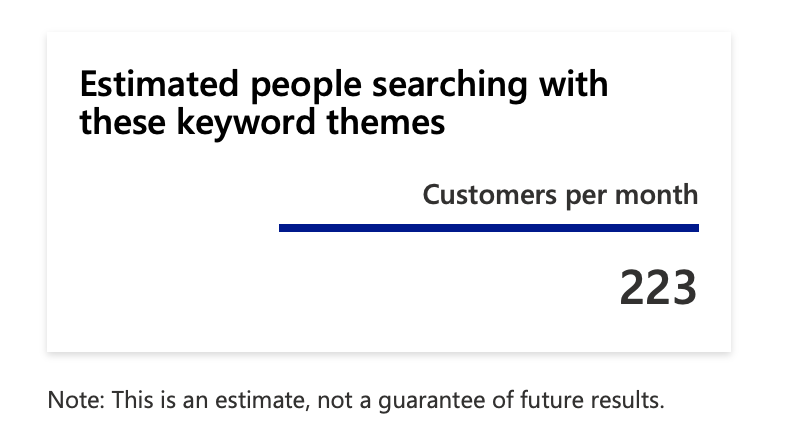
Counterintuitively, you may not want to bid on keywords with very high monthly search volume. PPC ad targeting is a complex operation, and it requires balancing search volume with bid amounts and competition ratings.
Top of page bid
When conducting research on Google’s Keyword Planner, you’ll see columns labeled Top of page bid (low range) and Top of page bid (high range). This is an estimate of how much it will cost to land a high position on a Google SERP. Ideally, you want a low top-of-page bid, but sometimes it’s worth spending top dollar if you know you can get great results.
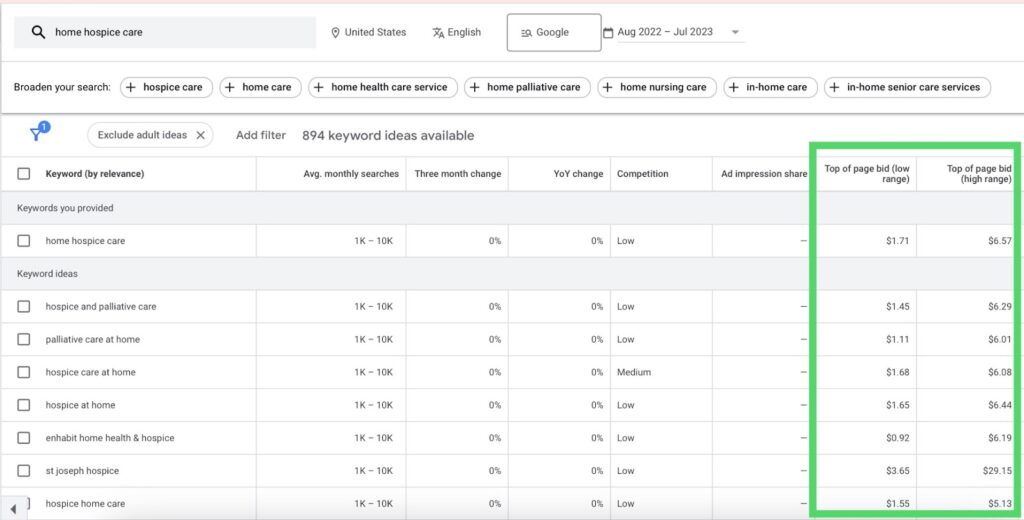
Quality score
Quality score is a PPC metric created by Google that weighs the relevance of your ads to a given keyword. This is a relative score, indicating how you rank against other advertisers. The higher the quality score, the better your chances of ranking highly on a SERP.
Note: Quality score is a “diagnostic tool,” as Google describes it, that can be used to “identify where it might be beneficial to improve your ads, landing pages, or keyword selection.”
Making PPC metrics work for your home care campaigns
Carefully monitoring and tracking key PPC metrics over time can help you run stronger, more efficient campaigns. The more you track over time, the more levers you’ll be able to toggle in order to improve campaign outcomes. Of course, for all home care campaigns, the goal is the same: add more high-quality leads to your sales funnel, and convert them into happy customers.
Make monitoring your home care agency's PPC metrics easy!
With Home Care Marketing Pros' PPC Management services we make running PPC campaigns easy and our CareFunnels software makes it easy to keep track of metrics. Find out more by watching our 1-minute walkthrough here!


